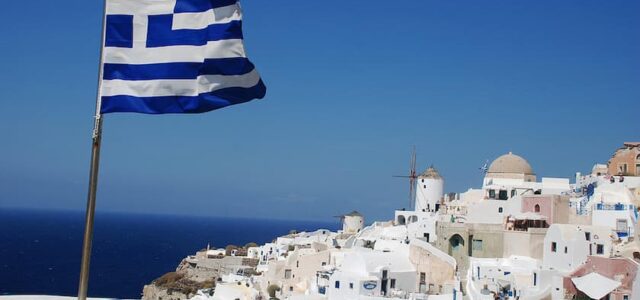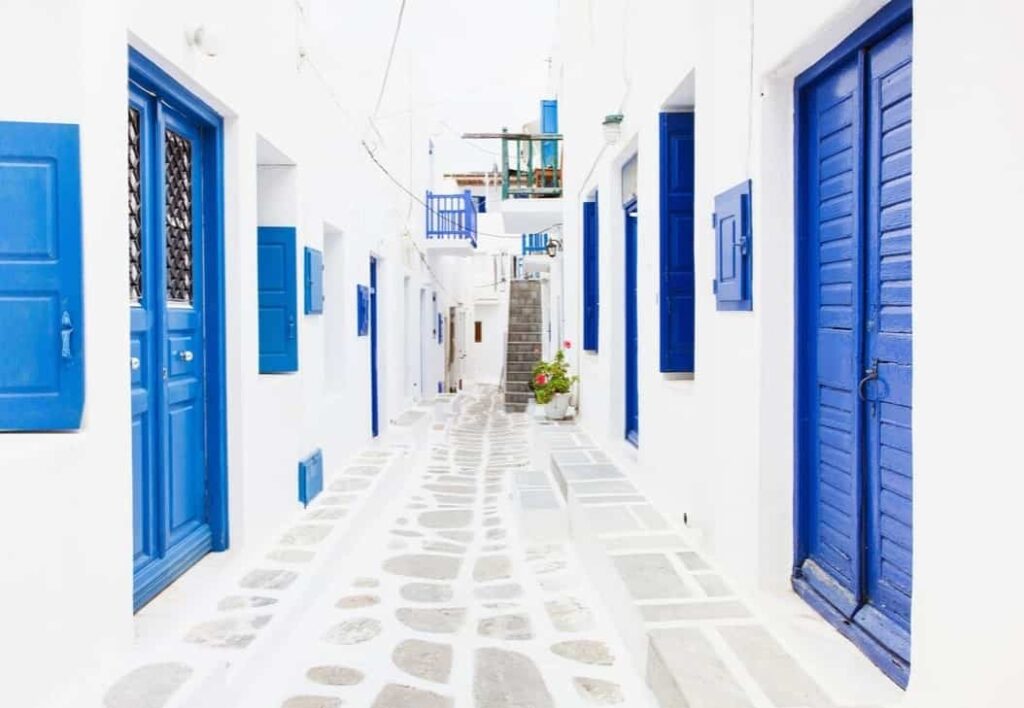Sail away with me on a journey of discovery as I explore the rich history and symbolism behind the iconic Greek flag! From ancient battles to modern-day pride, this post is packed with fascinating facts and trivia. So, grab a plate of Greek salad, and get ready to learn all about the blue and white emblem that represents this European country to the world.
Get yourself a durable Greece flag that’s made of high-quality materials, designed to withstand outdoor conditions and resist fading. Suitable for both indoor and outdoor use, these flags are perfect for decoration and special events. They can be mounted on a flagpole, hung from a wall, or even used as a tablecloth.

When Was the Official Greek Flag Adopted?
The official flag of Greece is a symbol of national pride and identity, but did you know that it has a long and complex history? The design we know today was officially adopted on December 22, 1978, but the blue and white colours have been associated with the country for many centuries.
Before the official adoption, Greece went through several different flag designs. The first official design was adopted in 1822 after the country gained independence from the Ottoman Empire. This one featured a white cross on a blue background, with a white stripe on the top and bottom.
In the early 1900s, the Greece flag was modified to include an additional two stripes, bringing the total number of stripes to nine. This design was used until the end of World War II, when the monarchy was abolished, and a new design was adopted. This featured a blue and white stripe on the top and bottom, with a white cross on a blue background in the middle.
After the fall of the military dictatorship in 1974, there was a movement to return to the original nine-stripe design. This design was officially adopted on December 22, 1978, and has been the official flag of Greece ever since.
So, as you can see, this Greek symbol has undergone several changes throughout history. But the blue and white colours have always been associated with the country and represent its natural beauty and heritage. Today, the flag is an important symbol of national identity and is often displayed in public buildings, government offices, and on national holidays.
The Meaning Behind the Colours and Symbolism

The Greece national flag features nine horizontal stripes of blue and white, and each colour holds a special significance. The blue colour represents the Aegean Sea that surrounds Greece. The sea has played an important role in the country’s history and culture, and it’s been a major source of livelihood for many Greeks. Additionally, it’s also been an important trade route throughout history.
The blue colour also represents the clear and bright blue sky of Greece, which is a symbol of the country’s natural beauty and serenity. On the other hand, the white colour represents the waves of the sea and the clouds in the sky, both of which are associated with the Greek landscape. The colour white is also a symbol of purity and innocence, which align with the country’s historical and cultural values.
The nine stripes are said to represent the nine syllables of the phrase “Eleutheria H Thanatos” which means “Freedom or Death”. This phrase has been a significant part of Greek history and culture and has been used to express the country’s desire for freedom and independence throughout the centuries.
Did They Use a Specific Tone of Blue?

The blue colour used in Greece flags is often described as “Greek blue”, which is a specific shade of blue that’s said to match the colour of the sea and the sky in the country. However, the exact shade of blue used in the design varies depending on the source, and there’s no official standardization of the colour.
It’s also worth noting that its colour may appear differently depending on the lighting conditions, the materials used, and the manufacturing process when creating the Greece flag available for sale. Therefore, it’s hard to pinpoint a specific shade of blue as the official one.
So, while it’s true that there is no specific tone of blue that’s officially recognised or standardised for use in the design, it’s often described as the “Greek blue” which is similar to the Aegean Sea colour.
Trivia
- The number of stripes in the flag is said to have been inspired by the nine Muses of Greek mythology, who were the daughters of Zeus and Mnemosyne;
- It’s been used in various forms since 1822 when it was first raised on the Acropolis, Athens;
- The flag’s origins can be traced back to 1821 when a group of Greek revolutionaries fighting against Ottoman rule created a flag with alternating blue and white stripes. This design was inspired by the traditional colours of the Greek Orthodox Church and the sea and sky of Greece;
- It’s also said that the flag’s blue and white colours were chosen to symbolise the purity of the Greek people and their fight for freedom;
- The flag has been flown during many significant events in the history of Greece, such as the War of Independence, the Olympic Games, and the 2004 Athens Olympics. It’s also flown on national holidays and at government buildings and is often seen on cars and buildings throughout the country.






















